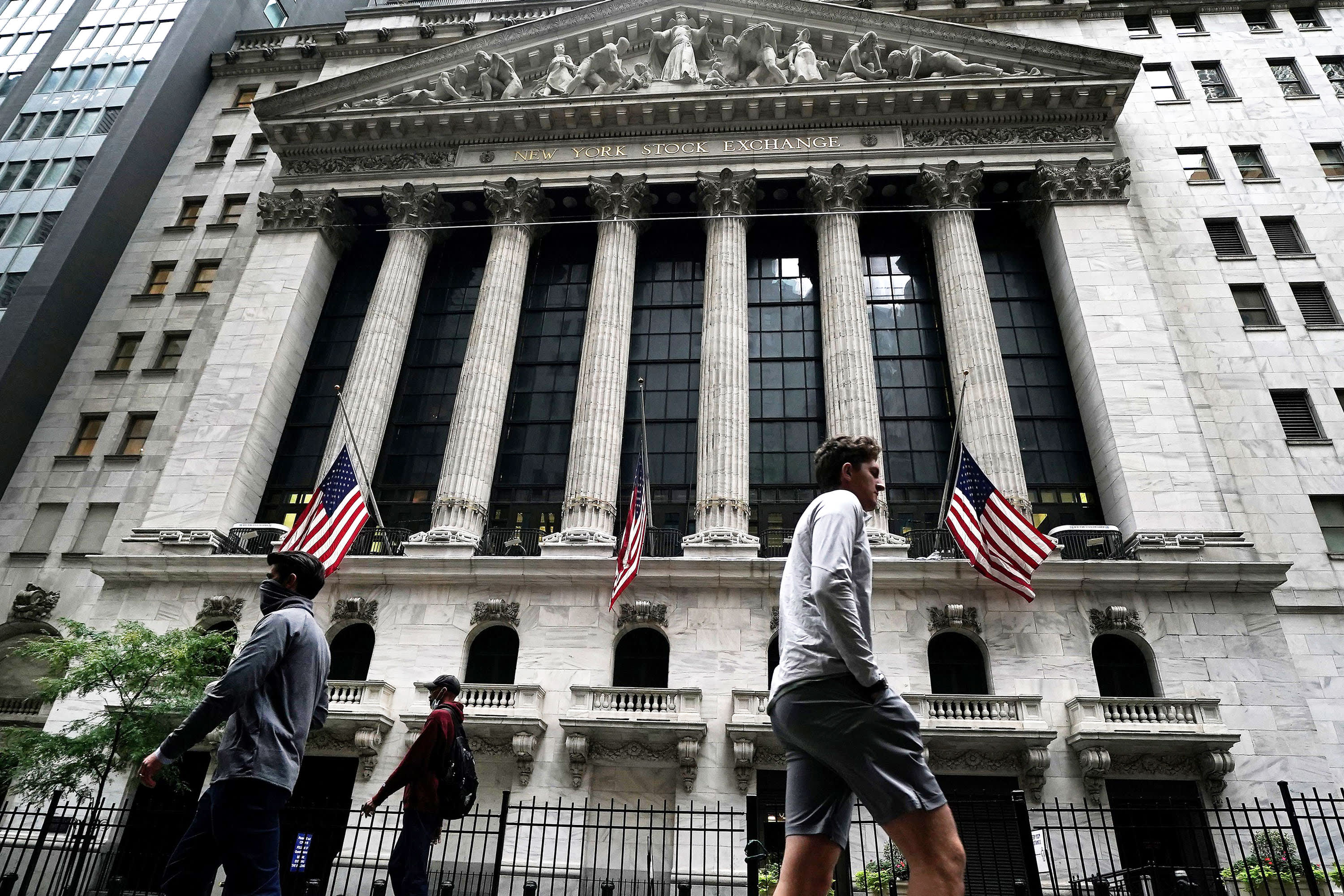Some are calling it “a la carte stimulus,” with aid for airlines in column A, PPP aid in Column B, etc. Whatever it is, hopes for stimulus — pre-election, post-election, comprehensive package, stand-alone deal, whatever and whenever — is supporting breakouts in cyclicals like industrials, materials, consumer discretionary, and banks.
Many big names like Caterpillar, Eaton and FedEx have broken to new highs. Materials stocks like Martin Marietta, Vulcan Materials, and Nucor are up 10% in the last week. Even bank stocks like US Bancorp are breaking out to multi-month highs.
For some, the cyclical rally is getting way too stretched.
“The action over the last couple weeks is baking a lot of positive news into the market,” Jack Miller, head of trading at Baird, told me.
Alec Young, chief investment officer at Tactical Alpha, agrees. “We are quietly getting overbought. The market is looking a little tired, the size of the rallies is getting smaller, with little waves of selling,” he told me. “It’s true cyclicals are rallying, but they have not shown any ability to do longer-term rallies.”
“I don’t think this market is very compelling, and I am pulling back and waiting to see what happens.”
There are others that are not converts to this rally. They note that the volume on up days has been notably light. The volume on down days has been notably heavier. This implies there is not much buyer conviction, that much of the rally is simply sellers holding onto stocks unless prices rise.
Jim Besaw, who manages $3 billion as chief investment officer at GenTrust, told me this is a sign many still don’t believe the rally: “The market is underpositioned. That’s why the markets go up on light volume days. The pain trade is still higher because most people are underweight the market.”
So is the market moving on a pipe dream? Besaw doesn’t think so.
“Stimulus will get done. If we have another big downturn like we did in March, it will get done sooner rather than later, but it will get done,” he said.
As for the outperformance of cyclicals, “Biden ahead brings in the likelihood that infrastructure will likely be very high on the list, and that is why materials and industrials are outperforming,” he said.
Still, what if there is no stimulus until well after the election? Could the market handle that? Besaw thinks it could: “If Biden continues to poll well, there is still room for the markets to run, particularly if corona cases don’t increase dramatically. When investors are underweight, you don’t necessarily need good things to happen to have the market go higher, you just need the absence of bad things.”
For the moment, traders are not as focused on the other side of the story: that Biden would likely mean higher taxes and weigh on stocks.
“You can say that means higher taxes, but the market seems to be saying that the contested election was an even bigger issue,” Besaw told me.
So what should traders do? Besaw agrees it’s tricky to add equity risk, and that option prices are high now.
His advice to bullish clients is to use call spreads. For example, buying a higher strike call on the S&P 500 (say 3700) and then sell an even higher strike call (say, 3800). “So if everyone goes smoothly and there is no contested election, and if the market goes through 3,800 (up 10% from where you are now), the call spread you bought” would net a handsome profit.
